Ælfgif-who? provides short biographies of early medieval English women every two weeks. Click on the podcast player if you’d like to hear this newsletter read aloud in my appealing Yorkshire accent.
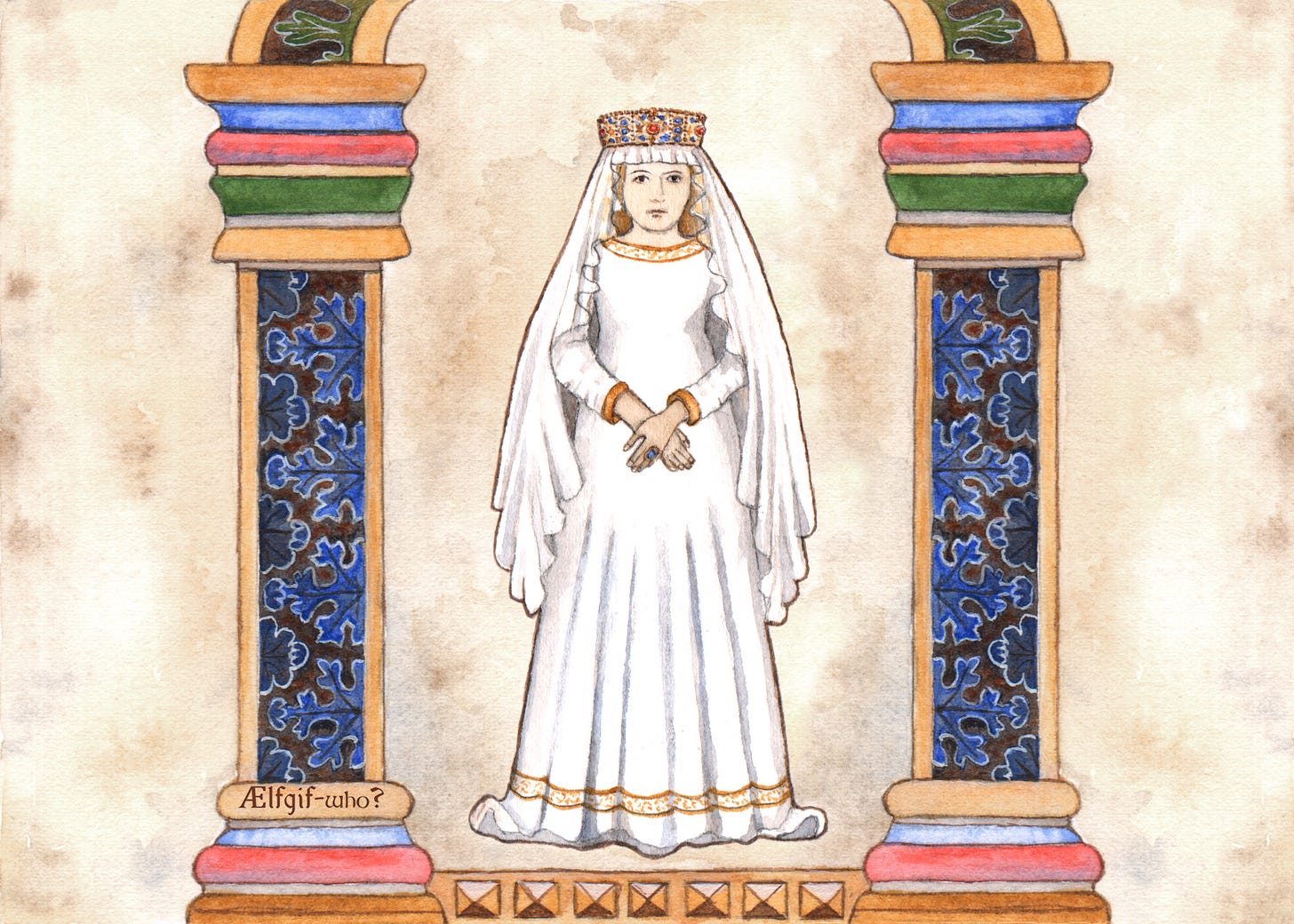
Judith: The First Crowned and Anointed Queen of Wessex… At Twelve Years Old
Judith, the daughter of the Frankish king Charles the Bald, is around twelve years old when she first appears in the historical record in a Frankish annal for the year 856, where it is stated that:
In July, Æthelwulf king of the western English, on his way back from Rome, was betrothed to King Charles’s daughter Judith. On 1 October, in the palace of Verberie, he received her in marriage. After Hincmar, bishop of Rheims, had consecrated her and placed a diadem on her head, Æthelwulf formally conferred on her the title of queen, which was something not customary before then to him or to his people. When the marriage had been sealed by mutual exchange of royal gear and gifts, Æthelwulf sailed with Judith to Britain where his kingdom lay.1
At the time of this ceremony Æthelwulf had already been the king of Wessex for twenty-seven years and he was around fifty years old. He had four living sons, two of whom were adults. He’d had a previous wife, Osburh, who was almost certainly dead by the time he married Judith in 856.
In this ceremony Judith became not only Æthelwulf’s wife, but his queen, undergoing a formal anointing and crowning ceremony in order to cement her status. This ceremony is the earliest record we have for the inauguration of an English queen. The liturgy that was performed in 856 is referred to as the Judith Ordo, and it survives to us in seventeenth-century printed books. The liturgy for Judith’s inauguration is incredibly valuable to historians because, unlike a lot of liturgical sources, it can be pinned to a very specific single event. The source has an enduring legacy: some of the text composed for Judith’s inauguration ceremony was used as recently as 1953, during the coronation of Queen Elizabeth II.
However, it was not all composed afresh for Judith. Archbishop Hincmar of Rheims part-composed and part-compiled the text for the ceremony. The main textual model for the inauguration of Judith was the First English Ordo, a liturgical text for the coronation of an English king. This suggests that there was no existing queen’s Ordo for Hincmar to utilise, and that the Judith Ordo was the first queenly inauguration ritual to be formalised in writing.
The part of the Ordo concerning marriage includes a blessing over the bride, the veiling of the bride, followed by a prayer over the gifts, a giving of a ring to Judith signifying the marital bond, a pledge that evokes a number of wives and widows from the Old Testament, and finally a prayer concerning the fertility of both the bride and groom. Then follows the part concerning the inauguration, partially adapted from the king’s Ordo, which begins with a blessing over the queen, an anointing prayer, the coronation prayer, and then blessings for the fertility of the royal couple.
For any young girl who must travel overseas where she has no allies, marriage to a foreign king would be an unsettling prospect. But Judith’s situation was particularly precarious. She was being shipped off to Wessex, where the status of a king’s wife was typically low. As explained by Asser in his Life of Alfred, written in c. 893, it was not a custom of the West Saxons to confer the title of ‘queen’ on the king’s wife, either in practice or in religious ceremony. Not only this, but Judith’s existence and her capacity to deliver Æthelwulf a new heir was a direct and ongoing threat to his adult sons who sought to inherit his kingdom.
Æthelwulf died after only two short years of marriage, and there is no evidence this marriage produced any heirs. Æthelwulf’s eldest son Æthelbald, upon inheriting the kingdom after his father’s death, controversially married his stepmother. Asser tells us that:
Once King Æthelwulf was dead, Æthelbald, his son, against God's prohibition and Christian dignity, and also contrary to the practice of all pagans, took over his father's marriage-bed and married Judith, daughter of Charles, king of the Franks, incurring great disgrace from all who heard of it.2
The appeal of marrying Judith, despite the controversy, was surely her prestigious family and her status as an anointed and crowned queen. Likewise for Judith, marrying her stepson would ensure her ongoing protection in Wessex. However, this marriage again apparently produced no heirs and Æthelbald died only two years later, at which time Judith, twice widowed and only around seventeen years of age, sold the lands she had acquired in England and returned to her father Charles the Bald in Francia.
Charles kept Judith under a royal guardianship at his castle in Senlis, with ‘all the honour due to a queen' according to a Frankish annal, but presumably little personal freedom.3 She was expected to wear widow’s clothing and remain chaste, unless her father permitted her to marry. In 862, against her father’s authority and with the help of her brother Louis (later King Louis the Stammerer) she eloped illegally with Baldwin, count of Flanders, and married him. Furious that this marriage had been engineered without his knowledge, Charles the Bald had Frankish bishops excommunicate the couple. Judith and Baldwin appealed to the Pope for support, and even asked Rorik, the Viking king of Frisia, for refuge. Charles eventually forgave his daughter and Baldwin, who settled down in Flanders and had children together. Baldwin died in 879.
In the 890s Judith and Baldwin’s son, Count Baldwin II, married the daughter of King Alfred of Wessex, Ælfthryth. We have no certain death date for Judith, and no knowledge of her activities in widowhood, but if she was still alive at this time she would have been instrumental in these marriage negotiations due to her knowledge of the Wessex court.
When we first encounter her, Judith is child bride, anointed in a sacred ceremony as the queen of a people across the sea, and taken by her middle-aged husband to an unknown land. As an instrument of the dynastic politics of her father and her husband, this was a precarious and even dangerous start to life for her. The sources do not tell us to what extent Judith played a part in each of the turns of her life, instead concentrating on the powerful men around her. However, her survival, subsequent marriage to her husband’s successor, and her elopement with Count Baldwin against her father’s wishes demonstrate a capacity for resilience, resourcefulness and even ambition on her part.
Suggestions for further reading:
Asser’s Life of Alfred, ed. By Simon Keynes and Michael Lapidge (affiliate link)
I have written previously about the relationship between gender and sex in Judith’s inauguration liturgy for Leeds University Medieval Society’s LGBT history month event: Florence H R Scott, The King’s Womb and the Queen’s Semen? Debunking Essentialist Views of Fertility in Early Medieval Royal Inaugurations
The Annals of St-Bertin, trans. by Janet L. Nelson (Manchester University Press, 1991).
Simon Keynes and Michael Lapidge eds., Alfred the Great: Asser's Life and Other Contemporary Sources, (London: Penguin 1983), p. 73.
Annals of St-Bertin.





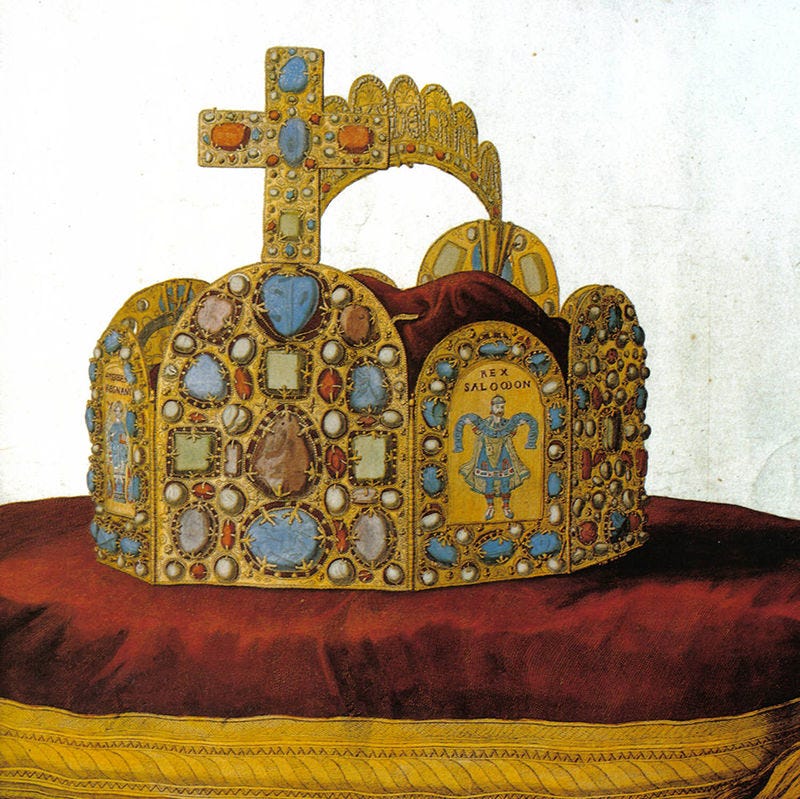

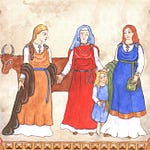
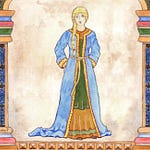
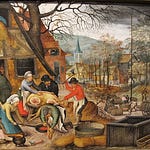
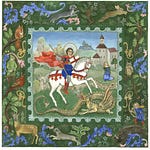



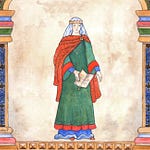
Share this post